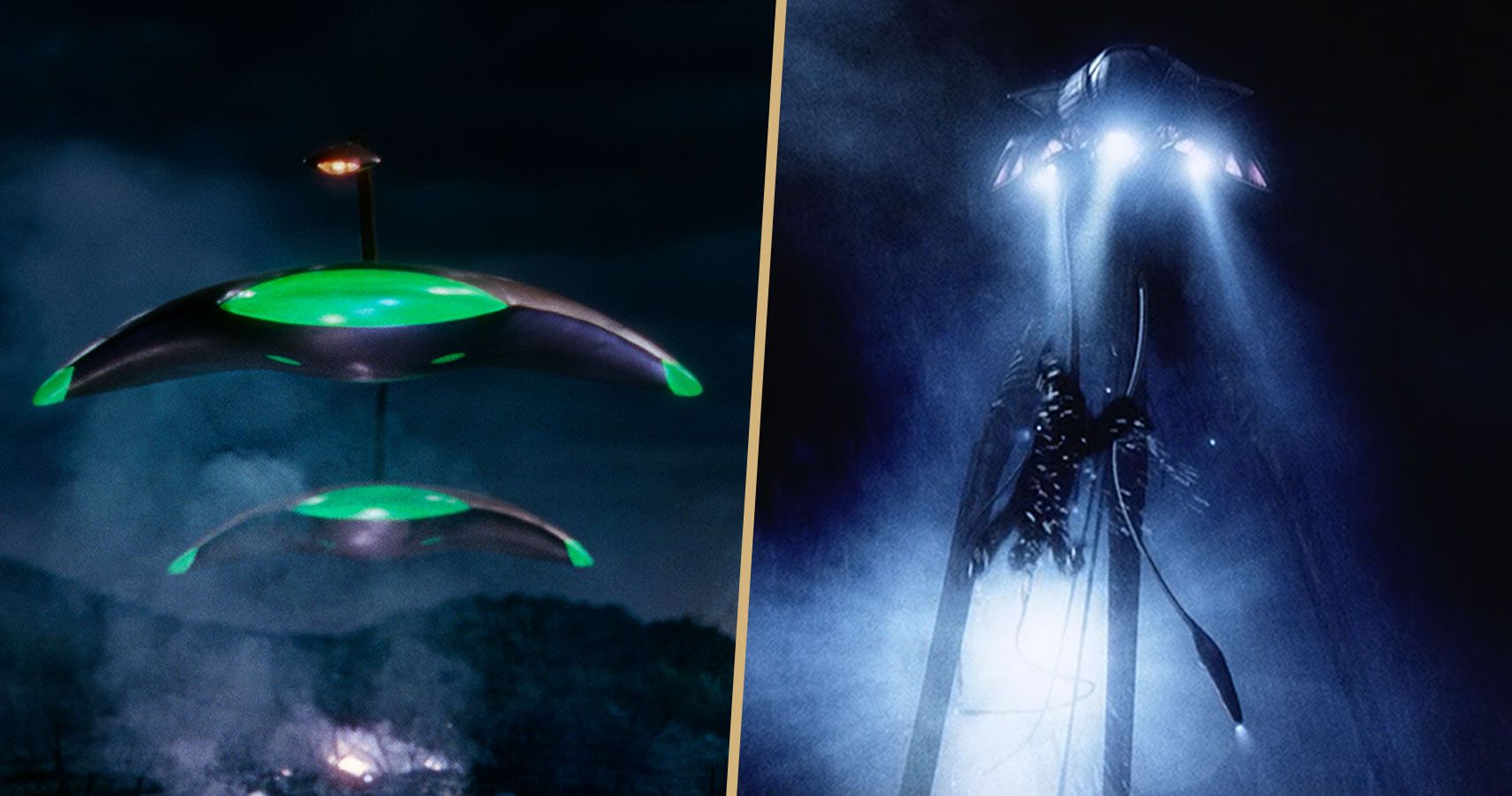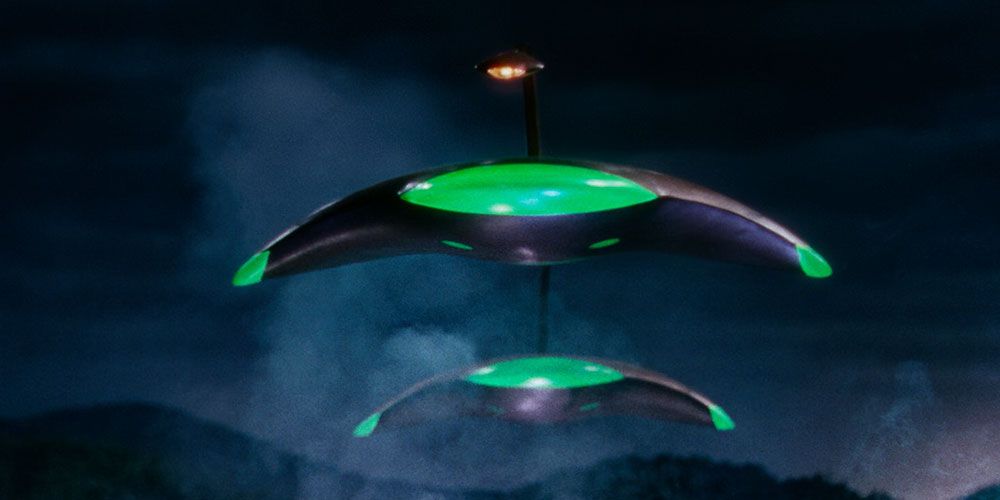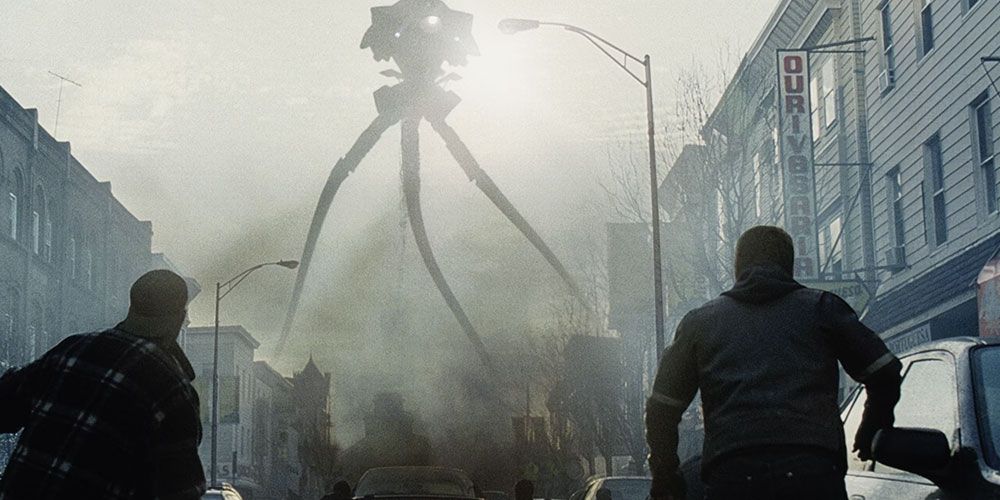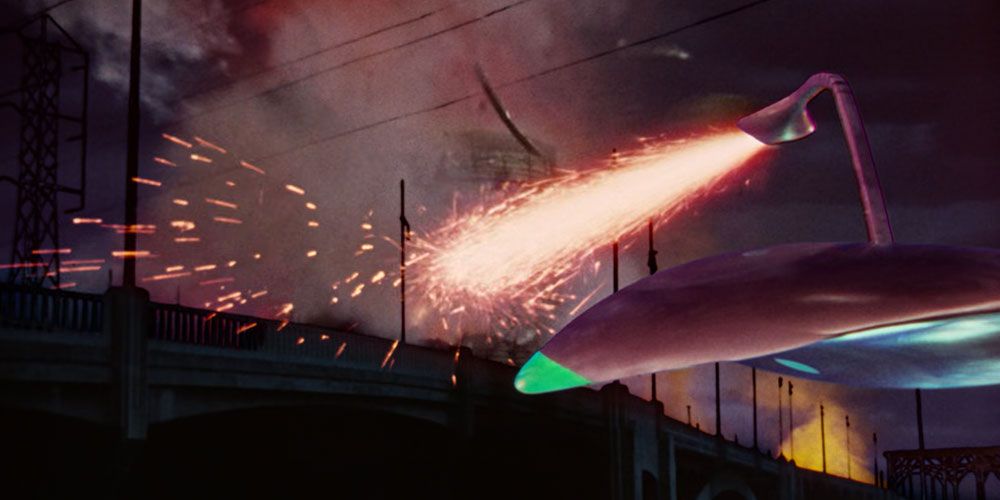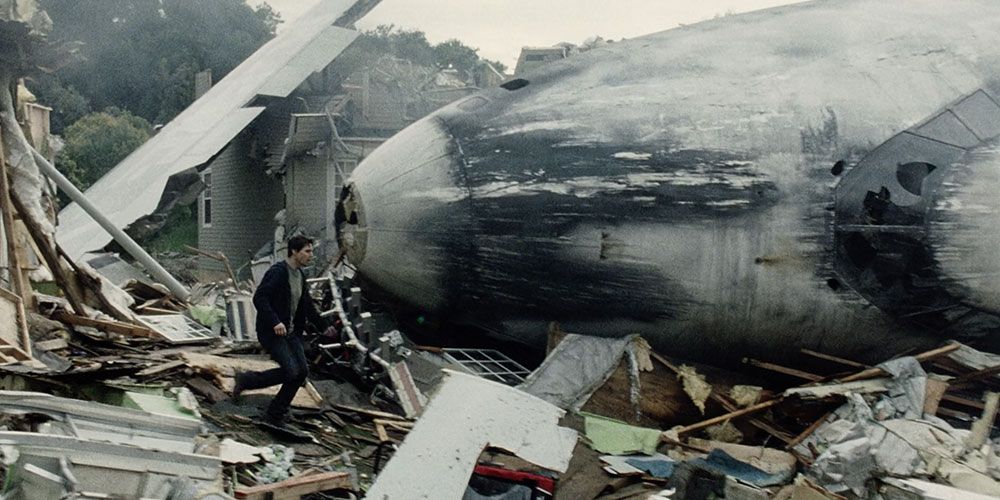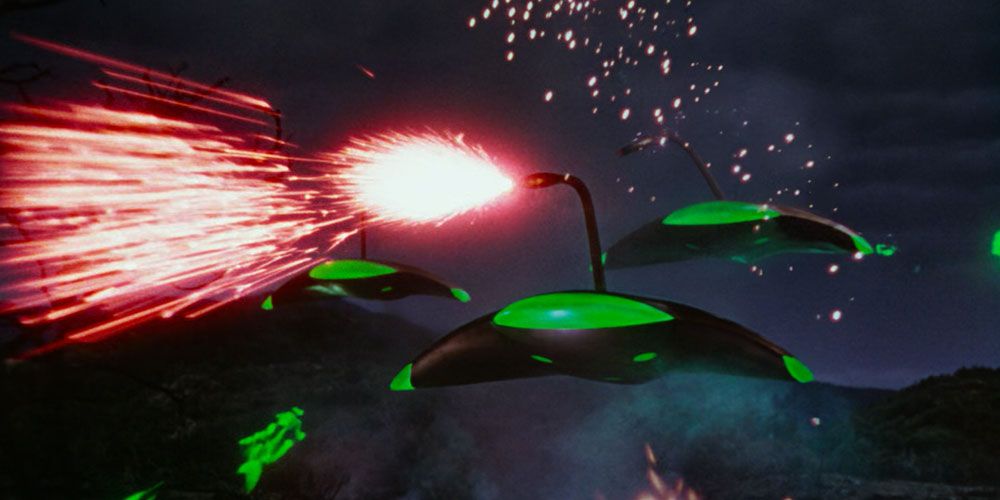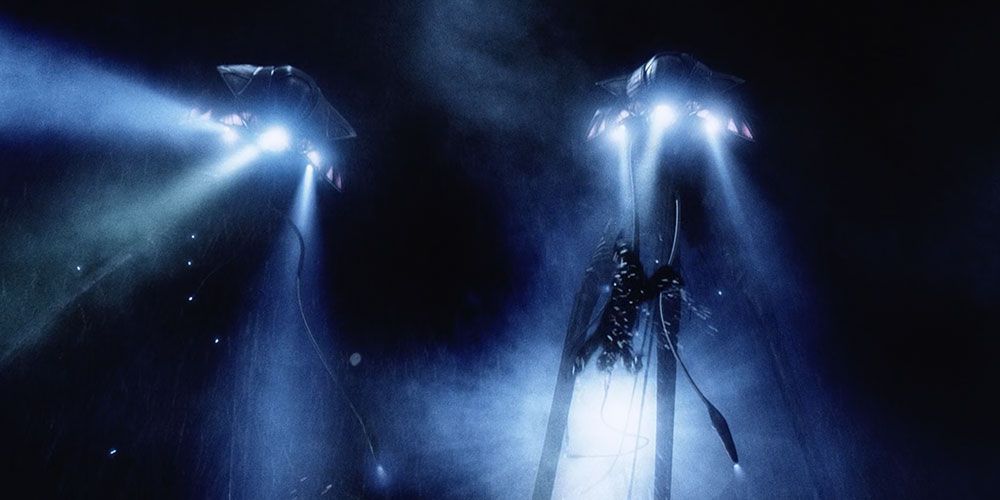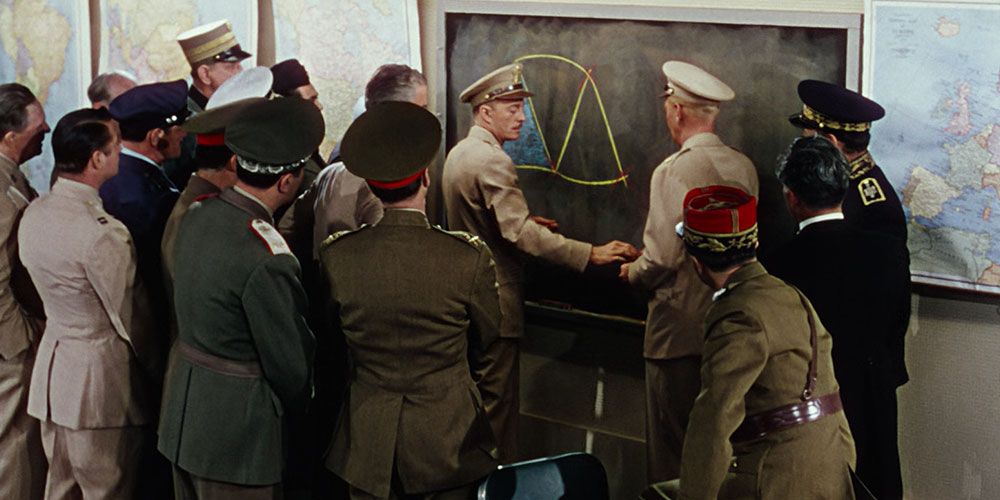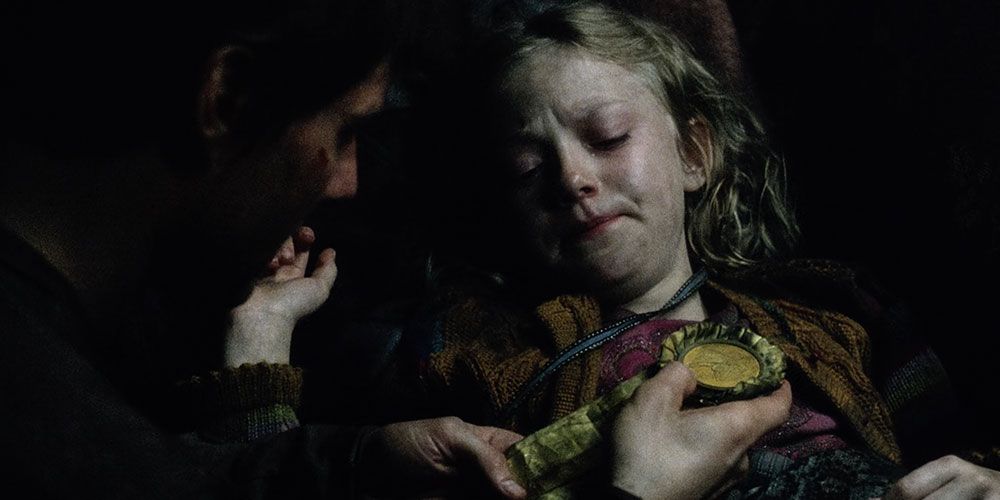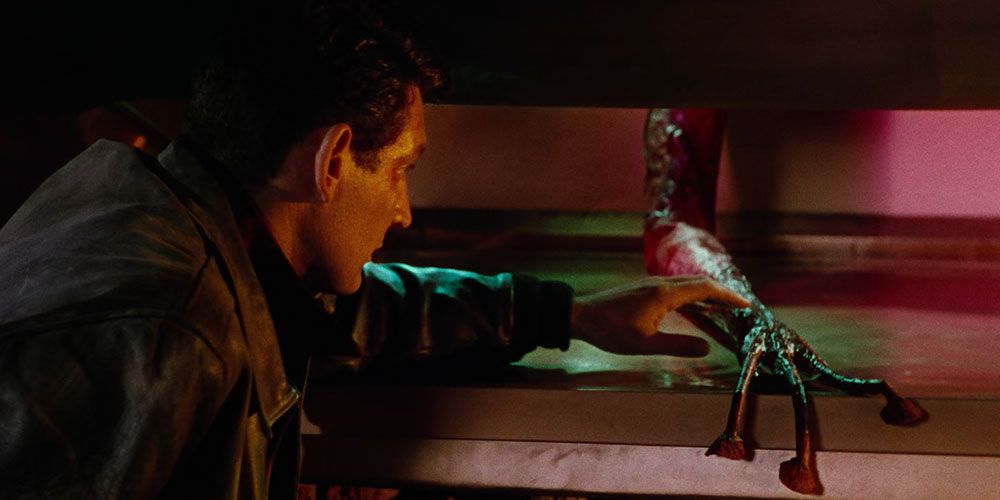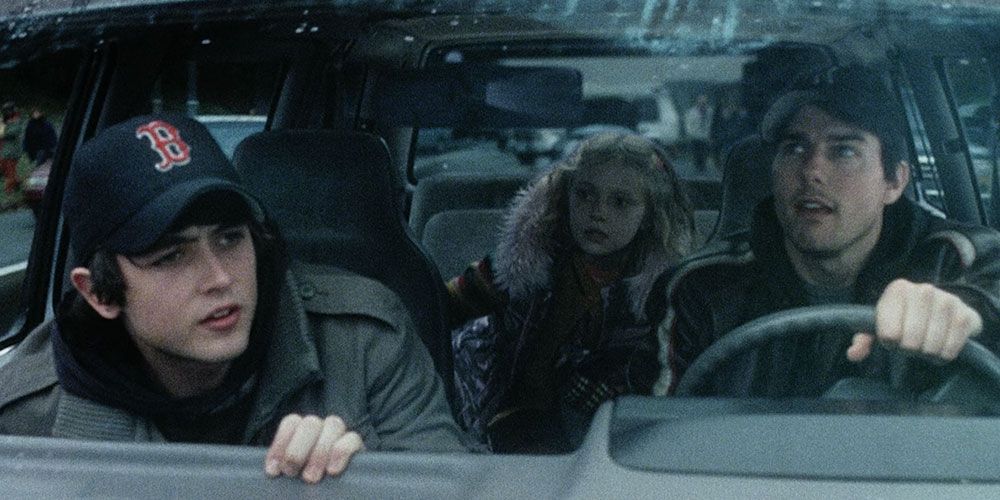War of the Worlds took sci-fi storytelling into brave new ground when H.G. Wells released his novel way back in 1898. Its 1938 radio broadcast was notorious for sending listeners into a mass panic due to the believability of the source material. Later, the story would get the Hollywood treatment with the 1953 release of the landmark film.
52 years later, Steven Spielberg released a remake that went on to become a smash hit in its own right, while telling the story from a very different perspective. Both of these films have been lauded for doing certain things better than the other, and it's time to compare them side-by-side to see how each fared in the public consciousness.
The Original Broke New Ground
When the 1953 version of War of the Worlds was released, it was a far different kind of Martian invasion movie than audiences had been used to. This particular take on the popular (at the time) formula threw out the camp in favor of genuine scares and a sense of dread.
War of the Worlds was bleak from start to finish. Mankind's attempts at stopping the Martians met with complete and repeated failure. By the time audiences witnessed the Martians shrugging off an atomic blast, they started to wonder if the situation was truly as hopeless as it seemed. Only the final scene of the film managed to turn things around for the better, while delivering a powerful message at the same time.
The Remake Was Scarier
In contrast to the 1953 version, the 2005 remake went straight for the jugular by amping up the fear level that was already prevalent at the time. 9/11 was still fresh in everyone's minds, and social paranoia was at an all-time high. For Steven Spielberg to take on War of the Worlds only a scant few years after the incident was a stroke of genius.
This War of the Worlds was far scarier than the original, and its invading aliens were far more terrifying. Closer in spirit to H.G. Wells' original designs, these Martians executed humans in grisly fashion while their gigantic death machines roared with spine-tingling intensity. From their very first reveal, the terror was real.
The Original Influenced Disaster Films
Hollywood disaster films owe a lot to War of the Worlds. Though the film wasn't the first to tackle the idea, it was one of the few that managed to demonstrate mass destruction and civil chaos on such a grand scale. This would have a trickle-down effect on the disaster movies that followed.
The film that took the most inspiration from War of the Worlds was undoubtedly 1996's Independence Day, starring Will Smith. It was the closest in spirit and tone to the 1953 original which pitted humankind against a seemingly unstoppable foe. It even brought back the idea of the invader's susceptibility to viruses— with a small twist.
The Remake Was Bleaker
Bleak, nihilistic disaster films were all the rage in the 2000s, and War of the Worlds was happy to take advantage. The Iraq/Afghan War was in full swing by that point, and American audiences were forced to deal with a blossoming 21st century already in the throes of discord and upheaval.
This War of the Worlds was far more introspective than the adventurous 1953 version. It didn't focus simply on an alien invasion, but the effects it had on one particular family unit. By the time the middle act had finished, sorrow and despair had set in as the family grew weaker and more vulnerable as a result.
The Original Had Excellent Special Effects
The original War of the Worlds boasted some spectacular special effects for its time. Though the piano wires holding up the Martian vehicles are all-too-easy to spot in the HD digital age, there's something magical about what director Byron Haskin and his team managed to accomplish in such a primitive age.
Ray gun effects, massive explosions, and alien shields were just a few of the impressive visual tricks that brought the story to life, and it was done so in a plausible manner. War of the Worlds took itself seriously, which was probably the key ingredient to its success.
The Remake Had More Realistic Visual Effects
Obviously, the jump forwards in time by 50 years was going to impact the remake of War of the Worlds in a big way. This was a much bigger-budget version of the story than had previously been seen, and the visual effects stood out without becoming the main focus of the story.
The alien vehicles were far more realistic and bone-chilling than their predecessors, and their blaster effects resulted in a multitude of ultra-realistic explosions and human deaths that made the premise feel all-too-real. Spielberg could have gone over-the-top, but he instead chose to go understated for the sake of realism.
The Original Was A Large-Scale Epic
War of the Worlds was a big hit in 1953, primarily because of its grand scale. It's important to remember that the movie came out less than a decade after World War II came to a close, and international relations were very much on the minds of the world's populace at that time.
To see a movie that united all of humanity against a common threat was an important message, especially in the wake of such a devastating war with so many dividing lines. It felt urgent and exciting to watch despite its bleak tone.
The Remake Was More Emotional
Since the remake of War of the Worlds focused on the alien invasion from the point of view of a common blue collar dad and his two kids, the tone became more emotional. Tom Cruise's character, Ray Ferrier, wasn't the best or most responsible dad— but when the chips were down, his love for his kids became his only focus.
It gave Cruise the opportunity to shine as an actor by demonstrating the real-time transition of a father who didn't take life too seriously, to one who was now fighting to keep his kids safe with danger at every turn. As such, it taught audiences a valuable lesson about making every day count with your loved ones.
The Original Changed Sci-Fi Alien Invasion Movies
The 1950s was well-stocked with cheesy sci-fi and horror films that were betrayed by their bad practical effects and silly performances. War of the Worlds would not be counted among them. This was a film that was confident about its message, and the effect it wanted to have on audiences.
As such, it was one of the first sci-fi alien invasion movies to flip the script in favor of a more serious portrayal of the genre. Whether on purpose or by accident, it would have a long-lasting impact on the sci-fi films that followed in its wake, from Invasion of the Body Snatchers to Alien.
The Remake Had Better Actors
As laudable as actors Gene Barry, Ann Robinson, and Robert Cornthwaite were, they didn't turn in quite the same performance as actors Tom Cruise and Dakota Fanning managed to do in the remake of War of the Worlds. Fanning single-handedly stole the show as a scared little girl taken well out of her TiVo comfort zone, a performance for the ages.
Cruise shines as well in his portrayal of a dad who slowly becomes unglued as things get worse and worse. His stress levels go through the roof as he struggles to stay strong for the sake of his kids. These were especially powerful performances that went a long way to selling the believability of the alien invasion.

